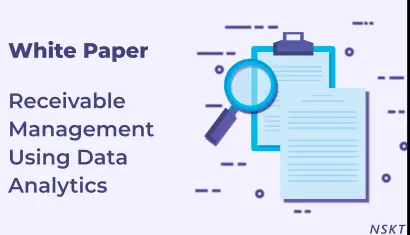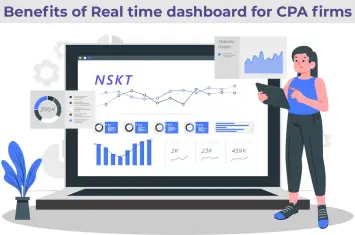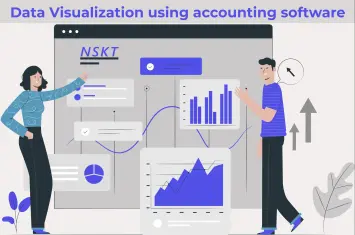Table of Contents
To increase working capital and revenue potions in the activities, a large number of firms take credit to carry out their businesses as today’s business environment is framed like that. Firms need to take care of their account receivables are safeguarded through periodic monitoring and management of credit transactions. In efforts to generate credit, firms exhaust all their resources generated by account receivables. A proper balance needs to be established between the risk taken and the situation which may result in non-payment or associated risk. Hence there is a dire need for good AR or account Receivable Management.
Leveraging Analytics for AR
An effective AR management strategy allows the firm to take the most feasible aggressive position for credit allocation, with non-payment risk constraints in check. This helps firms in growing rapidly with low risk and provides them with a technical advantage in a similar product and services market. A good strategy emphasizes on post billing factors with lesser pre-billing factors, as they can be controlled by the AR department. It also helps in providing solutions to questions like whom to follow up with at what time, mode of follow-up, and escalation know-how.
Benefits of DA and BI integrated AR strategy:
- In-depth analysis: Using the modified AR strategy, historical trends, and response of receivables after accounting, can be observed, making shifts in performance visible to the front. Demography based analysis is also feasible revealing the percentage of invoices paid on time and suggestions for better management of currencies, geography, invoicing units, offerings, or simply sales reports. Defaulting clients can also be segregated from the loyal ones.
- Cash Flow: Through Data Analytics and Business intelligence tools integrated into the AR strategy, the Order to cash chain can be inspected, thorough which flaws or objections could be identified. This helps in identifying overdue payments and reduces AR balance. The major takeaway is awareness of customer-specific payment patterns along with the implementation of a customized collection strategy. Through easily implementable measures, the collections can be improved roughly 10-15% in a short span.
- DSO Prediction and minimization: Using complex statistical modeling of multiple variables, DSO can be effectively predicted or forecasted. The outcome is a proactive collection of funds, in place of a conventional reactive collection based on the aging of AR balance. Through proper implementation of the strategy, DSO can be reduced in a very short span, by reducing AR balance and resolve unauthorized deduction disputes.
- Credit risk: BI integrated Account Receivable Management, helps to assess the risk profile of the customer and empowers the system to provide actionable intelligence required for advanced warning and management. Through DA integrated AR strategy, customers at risk of breaching credit limit thresholds can be identified along with updates on the risk profile of clients turning worse in recent time along with suggested solutions. Using both, active monitoring and upgrading risk profiles to make that updated could be done.
- Predictive Analysis: Through Data Analytics and Business intelligence, firms can identify whether their payments are at risk by leveraging predictive analytics capabilities. The probability of recovery of long-overdue accounts receivables can also be calculated, along with implications of changes in policy and the process.
- Bucket Analysis: Through research carried by DA and BI tools positions of receivables along with their composition can be identified, along with crucial parametric information such as risk exposure, particularly in events when receivables will be attained beyond a threshold. Prediction on the requirement of writing-off or transact to the collection in the future can be made through bucket analysis, along with the list of top clients based on outstanding receivables.
BI and DA simplify the AR management process to a very easy level through interactive dashboards with all the required KPI’s for multinational, multi-currency, or multi-entity organization of any size. The summary view of the dashboard summarizes every relevant key aspect associated with the client. All this assists' firms in getting customers to pay on time, and not defaulting. With the added advantage of integrated BI, being cloud-based, firms can easily access the dashboard and information from remote locations, empowering to use remote workers and making service reliable and robust. One of the biggest advantages is the availability of subscription contracts to reduce front-up costs, thus reducing expenditure and increasing profits. Through DA and BI integrated receivable management firms can get the optimum return on investment upon their capital, with slight investment. NSKT Global provides best data analytics and business intelligence services across the globe including UAE and USA.







